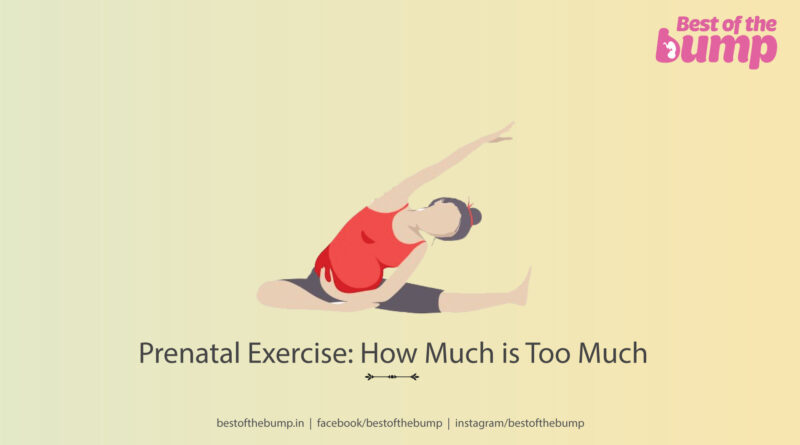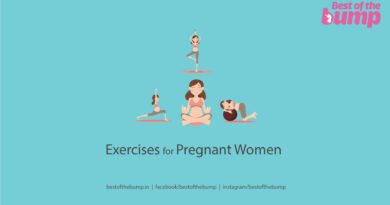Prenatal Exercise: How Much is Too Much
Prenatal Exercise, Pregnancy is undoubtedly a critical phase in a woman’s life, one that demands careful consideration and a judicious approach. As the body undergoes a myriad of changes to nurture and bring forth new life, striking a harmonious balance between staying active and ensuring the well-being of both the mother and the baby becomes paramount. While medical experts recommend maintaining an active lifestyle during pregnancy, it is imperative to tread cautiously, honoring the unique needs of your body and avoiding overexertion.
Listening to Your Body: The Guiding Principle

Staying active during pregnancy offers an array of benefits, from improved mood and reduced discomfort to enhanced stamina for labor. However, the key to effective prenatal exercise lies in listening to your body’s cues. Every pregnancy is unique, and each individual’s physical capacity varies. It’s vital to establish a connection with your body and understand its limitations. If an activity feels uncomfortable or strenuous, it’s a sign to pause and reevaluate. Trusting your body’s signals and practicing self-awareness are the first steps toward ensuring a safe and healthy exercise routine.
The Role of Posture in Prenatal Exercise
As pregnancy progresses, maintaining proper posture becomes increasingly challenging due to the incremental weight gain. This is a critical consideration, as incorrect posture can lead to undue strain on muscles and joints. Sitting with a straight back not only alleviates discomfort but also helps distribute the weight more evenly, preventing unnecessary pressure on certain areas of the body. The simple act of being mindful of your posture can make a significant difference in mitigating discomfort and enhancing your overall well-being.
Moderation: The Key to Second-Trimester Exercise

The second trimester often brings a respite from the initial discomforts of early pregnancy. During this period, moderate exercise can still be beneficial, contributing to physical fitness and emotional well-being. However, it’s important to acknowledge that the second trimester is not a time to push boundaries in preparation for labor. While engaging in exercises that feel comfortable and enjoyable, keep in mind that you are not on the cusp of labor days yet. Being attentive to your body’s limits and stopping when you feel excessively fatigued is crucial to avoid overexertion.
Cautions and Considerations: Activities to Avoid
With the growth of your baby bump, there are certain activities that warrant extra caution. Exercises that involve bending or putting pressure on the pelvic area should be approached with care, as they can pose risks to the developing baby. Activities that challenge your balance should also be treated with caution. The additional weight you’re carrying increases the likelihood of falls, which can have serious consequences. Engaging in diving, cycling, or sports involving collisions or contact is generally not advisable during pregnancy, as they carry inherent risks that could jeopardize your well-being and that of your baby.
Seeking Professional Guidance (Prenatal Exercise: How Much is Too Much)

Amid the excitement and anticipation of pregnancy, seeking guidance from healthcare professionals is a cornerstone of responsible prenatal exercise. Midwives and doctors possess valuable insights that are tailored to your unique situation. Engaging in an open and honest conversation about your body’s capabilities and exercise limitations is crucial. They can provide informed advice, offering a roadmap that aligns with your specific needs and circumstances. Remember, their expertise is designed to guide you through a safe and effective exercise routine, fostering a healthy pregnancy journey.
Embracing Mindfulness and Caution
Embarking on a prenatal exercise regimen requires a marriage of mindfulness and caution. It’s a delicate equilibrium that honors the dynamic changes occurring within your body. By listening to your body’s cues, maintaining proper posture, embracing moderation, and avoiding activities that carry potential risks, you’re making a profound investment in the well-being of both you and your baby. The path to motherhood is a transformative one, and nurturing yourself through well-balanced exercise is a vital component of this incredible journey.
In conclusion, prenatal exercise is a powerful tool that, when wielded with wisdom and care, can enrich the experience of pregnancy. By heeding your body’s signals, prioritizing proper posture, practicing moderation, and consulting healthcare professionals, you’re creating a solid foundation for a healthy pregnancy journey. Your body is a vessel of resilience and strength, and by approaching prenatal exercise with mindfulness, you are not just fostering physical well-being but also embracing the empowerment that accompanies a journey to motherhood.




